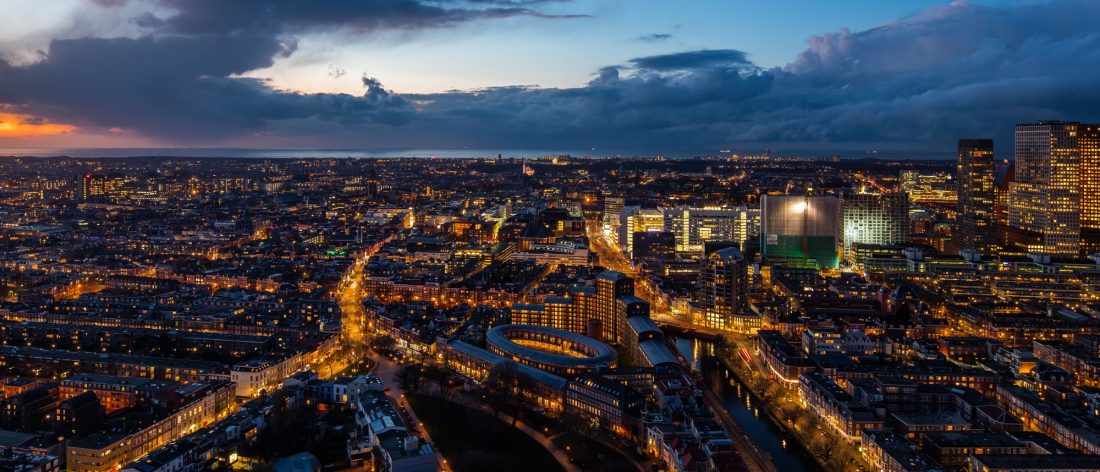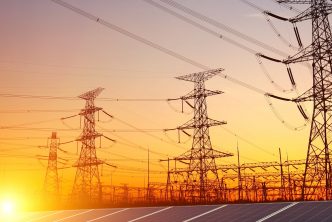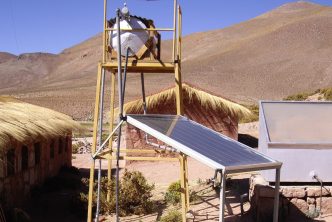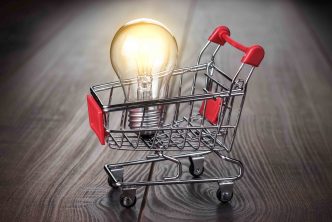Is 100{1c02100822988c48c7b0a484ab61ac3d7f398d67c2f66594d88b2db33072d9d9} Clean Energy Attainable in Africa?
Why Bother?
There is no doubt that Africa is the world’s emerging giant. Statistics from the World Economic Forum and Brookings show that by 2030, one in five people on earth will be African. The United Nations has also predicted Africa’s 2030 population to be between 1.65 and 1.71 billion people. As long as fertility and survival rates across the continent continue to improve, 40 percent of children under five years and more than thirty-three percent of people under eighteen will be from Africa.
Africa’s economy is the second-fastest-growing worldwide after Asia. According to Mckinsey, the continent’s real GDP has grown by an average of 4.7{1c02100822988c48c7b0a484ab61ac3d7f398d67c2f66594d88b2db33072d9d9} per year, twice its growth pace in the 1990s. Ghana, Ethiopia, Rwanda, and Côte d’Ivoire are four of the world’s fastest-growing economies, according to data from The World Economic Forum and World Bank show are in Africa. Africa’s average annual GDP growth has consistently outperformed the global average and is expected to grow by at least 6 percent until 2023.[1] The continent’s economy is emerging, which presents exciting business opportunities for Africa and the rest of the world.
The continent’s population and economic growth show that Africa is rising to take its position as the world’s economic centre for the next century. Combining the exponential population growth with improvements in education, health, infrastructure, and technology, the rest of the world can look forward to more business with Africa to establish global dominance in the next few decades. China seems to recognise this opportunity better than other world giants and is proactively strengthening its links with Africa by investing in infrastructure, modern agriculture, and industrialisation. The question is: where is the energy to power the economic growth in the forthcoming decades?
Energy access and security is the driver for Africa’s projected reality as the world’s economic centre. The truth is, without energy, the required and potential growth in technology, health, commerce, industry, and transportation would be nothing but a far-fetched dream. The energy consumption patterns of already advanced economies show that there are “no rich, low energy countries” because energy is the backbone of any economy’s development.
Energy consumption and income per capita are proportional. High-income countries consume at least 4,000 kilowatt-hours(kWh) per person yearly. The energy per capita consumption gaps between advanced and developing countries in Africa are very wide. For example, the United States of America (USA) uses over 12,000 kWh hour per person yearly, whereas Ghana uses 350 kWh, Kenya consumes 164kWh, and Nigeria uses 140kWh yearly. The California Energy Commission reports that energy consumed on gaming in California is currently at five terawatt-hours; this is more electricity than Nigerians receive from the grid at any given time.
How Clean Are We?
Economic progress in a few African countries does not derail from the fact that the continent is still ‘dark.’ As of 2017, 61{1c02100822988c48c7b0a484ab61ac3d7f398d67c2f66594d88b2db33072d9d9} of the global population without electricity lived in sub-Saharan Africa. The International Energy Agency has warned that with the current pace of planned electrification and access, 530 million people in Africa would still lack access to electricity, and nearly one billion would still lack access to clean cooking by 2030.
Africa’s energy access and security levels indeed lag behind the rest of the world, but the less common information is that Africa’s energy access rate has more than doubled in the last decade. According to Africa Energy Outlook, the number of people gaining access to electricity in Africa increased from 9 million yearly between 2000 and 2013 to 20 million people between 2014 and 2018. This has contributed to the decline of numbers without electricity access to the current level. North Africa now has over 99{1c02100822988c48c7b0a484ab61ac3d7f398d67c2f66594d88b2db33072d9d9} access rates, while access in sub-Saharan has nearly doubled from only 25{1c02100822988c48c7b0a484ab61ac3d7f398d67c2f66594d88b2db33072d9d9} in 2000 to 45{1c02100822988c48c7b0a484ab61ac3d7f398d67c2f66594d88b2db33072d9d9} today.
Africa’s energy mix is dominated by biomass and fossil fuels[2], with large-scale hydro constituting most of its renewable energy.[3] The continent is far from reaching 100{1c02100822988c48c7b0a484ab61ac3d7f398d67c2f66594d88b2db33072d9d9} clean energy in the nearest future, but all hope is not lost. Renewable energy accounts for an average of 49{1c02100822988c48c7b0a484ab61ac3d7f398d67c2f66594d88b2db33072d9d9} of the energy consumed in Africa compared to about 18{1c02100822988c48c7b0a484ab61ac3d7f398d67c2f66594d88b2db33072d9d9} of global consumption, with hydropower accounting for most of the clean energy for large scale electricity supply (World Bank, 2015). On the other hand, access to clean energy for cooking has also made some progress. In West Africa, almost three million people gain access to clean energy for cooking every year since 2010, while in East Africa, 1.5 people gain access yearly. In Côte d’Ivoire, clean energy in liquified petroleum gas is used by 55{1c02100822988c48c7b0a484ab61ac3d7f398d67c2f66594d88b2db33072d9d9} or urban households and 5{1c02100822988c48c7b0a484ab61ac3d7f398d67c2f66594d88b2db33072d9d9} of rural households. In Ethiopia, as of 2018, 32{1c02100822988c48c7b0a484ab61ac3d7f398d67c2f66594d88b2db33072d9d9} of the urban population now cook with electricity, compared to 6{1c02100822988c48c7b0a484ab61ac3d7f398d67c2f66594d88b2db33072d9d9} in 2011. Also, more than 80{1c02100822988c48c7b0a484ab61ac3d7f398d67c2f66594d88b2db33072d9d9} of South Africans use electricity for cooking. Sub-Saharan Africa is the only region that has not experienced notable progress in access to clean energy for cooking. Only 25 million people have gained access since 2015, whereas the numbers without access continue to rise due to the population boom.
Africa can achieve its energy access goals by 2030 and 2050, but how much of it can be clean? The UN Economic Commission for Africa agrees that hydrocarbons such as crude oil, natural gas, and coal, which are all in abundance in Africa, play vital roles in developing African economies and energy security. However, is it possible to explore a cleaner path to development?
There is an urgent need to accelerate access to contribute its quota to meeting the global Sustainable Development Goal (SDG) 7, which is to attain “affordable and clean energy.” Clean energy access in Africa has drastically improved in the last decade, but achieving 100 percent clean energy is improbable. Without stepping up actions to enable access to clean energy, at least 650 million people will be without electricity access by 2030; nine out of 10 of them will be living in sub-Saharan Africa.
Ghana and Kenya serve as role models for other African countries as they are expected to achieve universal access before 2030. Ghana has committed to reducing its carbon emissions by 15{1c02100822988c48c7b0a484ab61ac3d7f398d67c2f66594d88b2db33072d9d9} by 2030, while Kenya, by 30{1c02100822988c48c7b0a484ab61ac3d7f398d67c2f66594d88b2db33072d9d9}. To support Kenya’s commitment, the President, Uhuru Kenyatta, recently announced the country’s plans to achieve 100{1c02100822988c48c7b0a484ab61ac3d7f398d67c2f66594d88b2db33072d9d9} renewable energy by 2020. Ghana aims to triple the number of grid connections by 2020 through renewable energy technologies.
Heads of African countries have come together to sign the Africa Renewable Energy Initiative. The initiative aims to collectively achieve at least 10 gigawatts of “new renewable energy generation capacity by 2020, and not less than 300 GW by 2030”.
To-Dos Today
What would it take for Africa to attain 100{1c02100822988c48c7b0a484ab61ac3d7f398d67c2f66594d88b2db33072d9d9} clean energy?
First, Africa must ramp up on investments in grid and off-grid electricity generation technologies. $50 to $80 billion[4] is needed yearly to achieve Africa’s sustainable energy objectives. Such a magnitude of investment has to come from a collaboration between government and private sources. The largest part of investments would be expected to go into renewable technologies, while others would go into energy efficiency and enabling collaborations. All stakeholders, including government, civil societies, and energy developers, suppliers, and consumers, need to work together towards achieving clean energy.
Such investment would require the design and implementation of the right policies and regulatory actions that improve the efficiency in utilizing the available funds and encourage the influx of more. The measures must also enable the efficient running of utilities and the use of public resources.
Africa will continue to unlock the potentials in its renewable energy resources over the next thirty years. Solar and hydro are expected to lead in the sub-Saharan region, while geothermal leads just after solar in East Africa. As costs of renewable technologies reduce relative to diesel and petrol, it is expected that at least two-thirds of mini-grid and off-grid systems in rural areas in 2040 will be powered by solar photovoltaics, small hydropower, or wind. If and when all these are done, maybe, just maybe, Africa will achieve 100 percent clean energy someday. Whether this would be accomplished in this century, no one can tell yet.






